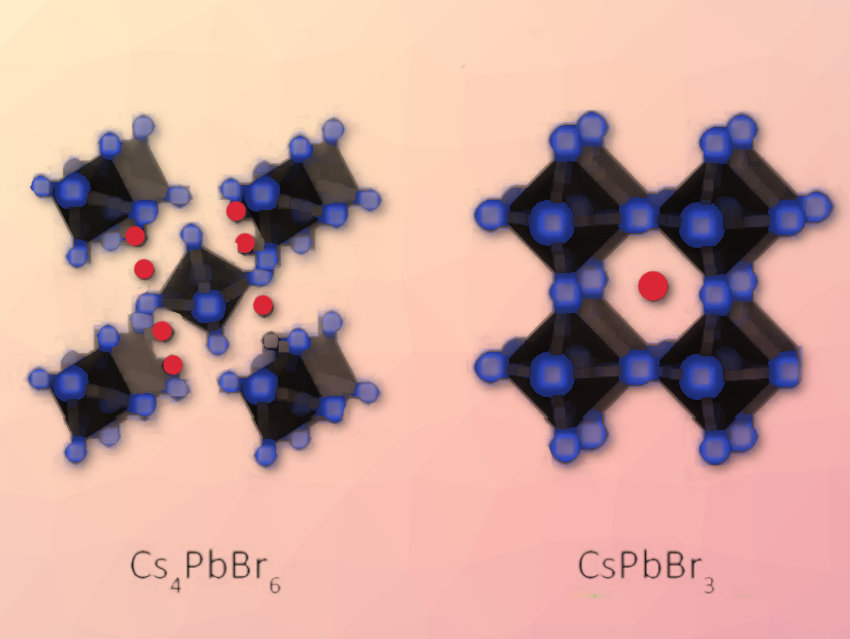Perovskite nanocrystals have great potential for backlight displays because of their excellent photoluminescence performance and quantum yield. However, their poor stability is the main limitation for commercial applications. In addition, issues with thermal stability, photostability, water-resistance, and anion exchange need to be overcome.
One approach to solve these problems is to reduce the structural dimension. The zero-dimensional perovskite-related Cs4PbBr6 is a luminescent material with good thermal stability and optical performance. The mechanism of the green emission from Cs4PbBr6 is not clear.
Xueyuan Chen, Fujian Institute of Research on the Structure of Matter, Chinese Academy of Sciences, Sebastian Mahlik, University of Gdańsk, Poland, Chonggeng Ma, Chongqing University of Posts and Telecommunications, China, Wuzong Zhou, University of St Andrews, UK, Ru-Shi Liu, National Taiwan University, Taipei, J. Paul Attfield, University of Edinburgh, UK, and colleagues have synthesized polycrystalline Cs4PbBr6 and CsPbBr3 quantum dots. They epitaxially embedded the CsPbBr3 nanoparticles within the Cs4PbBr6 matrixes and investigated the nanoparticles with powder synchrotron X-ray diffraction (XRD), high-resolution transmission electron microscopy (HRTEM), and photoluminescence (PL) spectroscopy. Epitaxially means that at least one crystallographic orientation of the growing crystals corresponds to an orientation of the crystalline substrate.
The isolated CsPbBr3 nanoparticles embedded within a Cs4PbBr6 matrix show the green luminescence known for Cs4PbBr6. Superfluorescence at longer wavelengths is suppressed. This refers to luminescence due to the collective emission of multiple quantum dots located close to each other at distances below the wavelength of the emitted light, so light emission from a
quantum dot can induce synchronous emission from nearby quantum dots. The team found that the embedded CsPbBr3 nanoparticles are around 3.8 nm in diameter. They are well-separated from each other, perhaps by a strain-driven mechanism. The researchers conclude that the embedded CsPbBr3 nanoparticles are the origin of the green emission in Cs4PbBr6 crystals.
According to the researchers, the study shows that the properties of optically active nanoparticles are significantly altered by embedding them in a suitable inert host lattice. The researchers assume that other efficient luminescent composites can be developed by epitaxially embedding optically active nanoparticles within inert host lattices.
- Efficient Luminescence from CsPbBr3 Nanoparticles Embedded in Cs4PbBr6,
Zhen Bao, Yu-Jui Tseng, Wenwu You, Wei Zheng, Xueyuan Chen, Sebastian Mahlik, Agata Lazarowska, Tadeusz Lesniewski, Marek Grinberg, Chonggeng Ma, Weihao Sun, Wuzong Zhou, Ru-Shi Liu, J. Paul Attfield,
J. Phys. Chem. Lett. 2020.
https://doi.org/10.1021/acs.jpclett.0c02321


